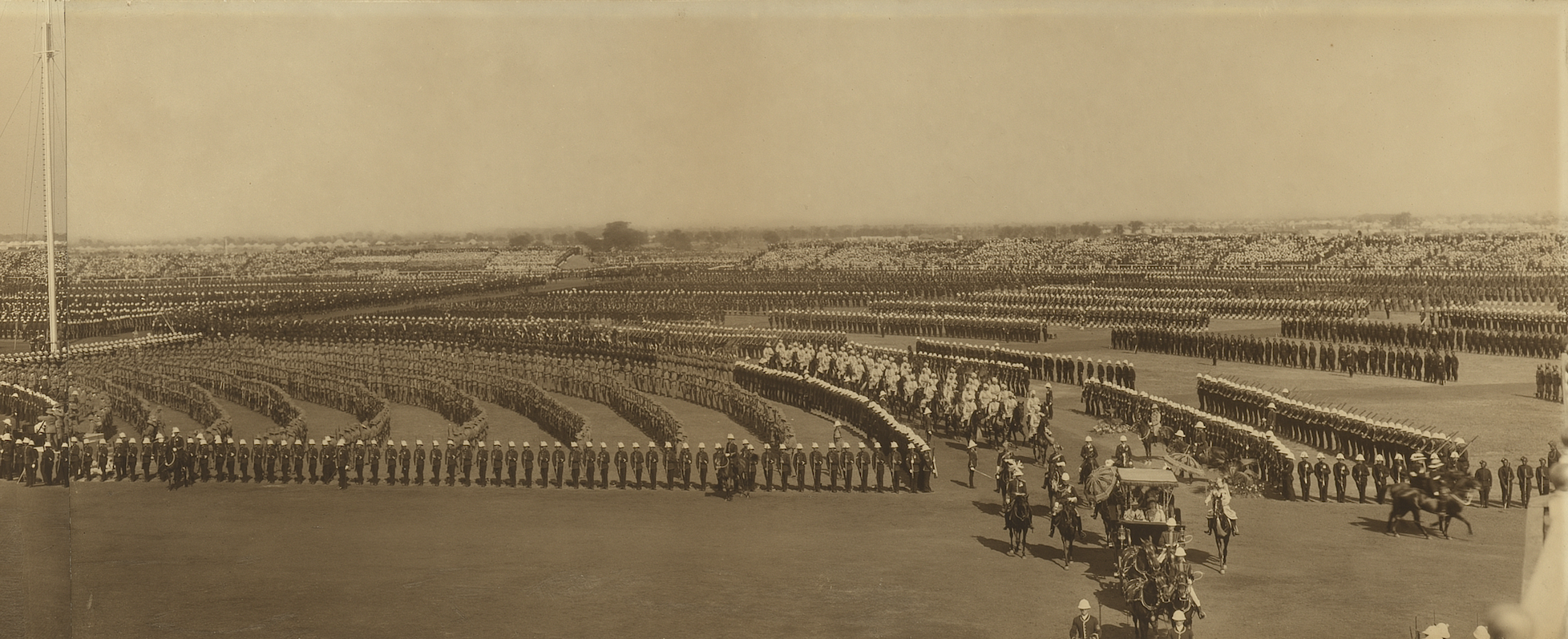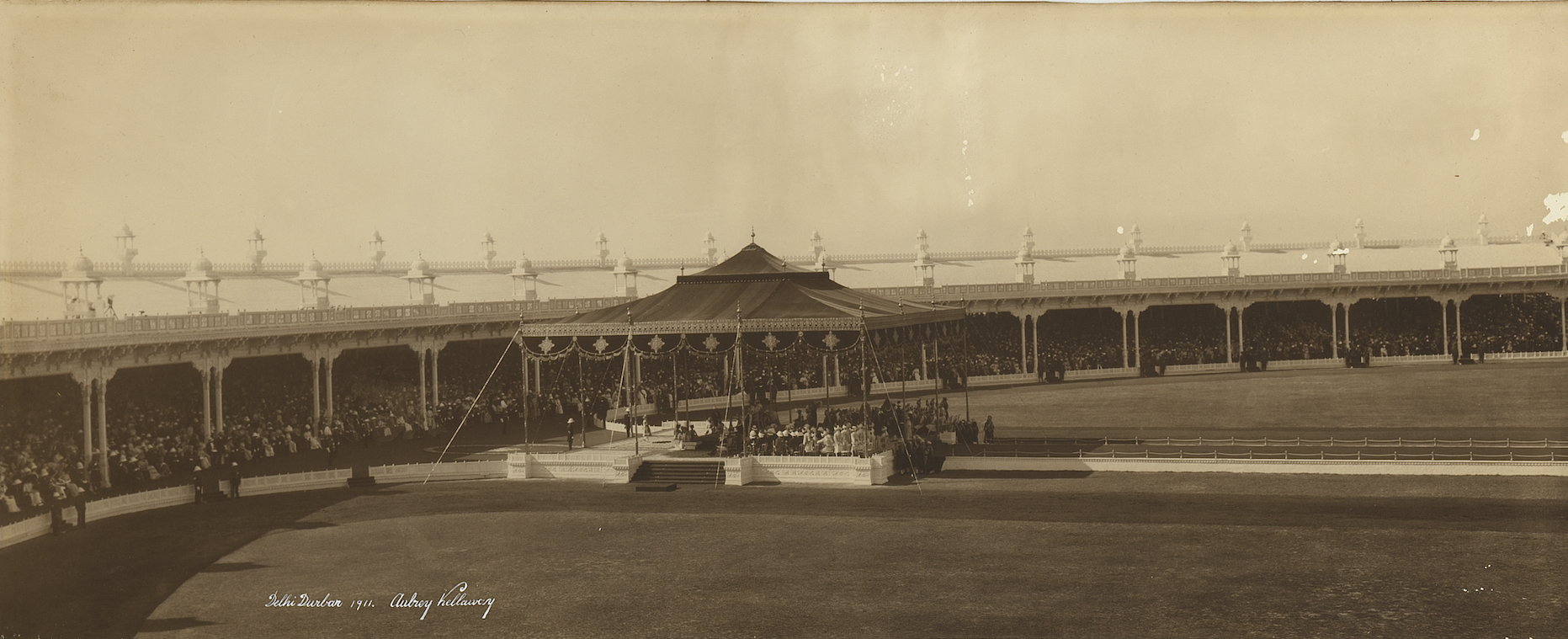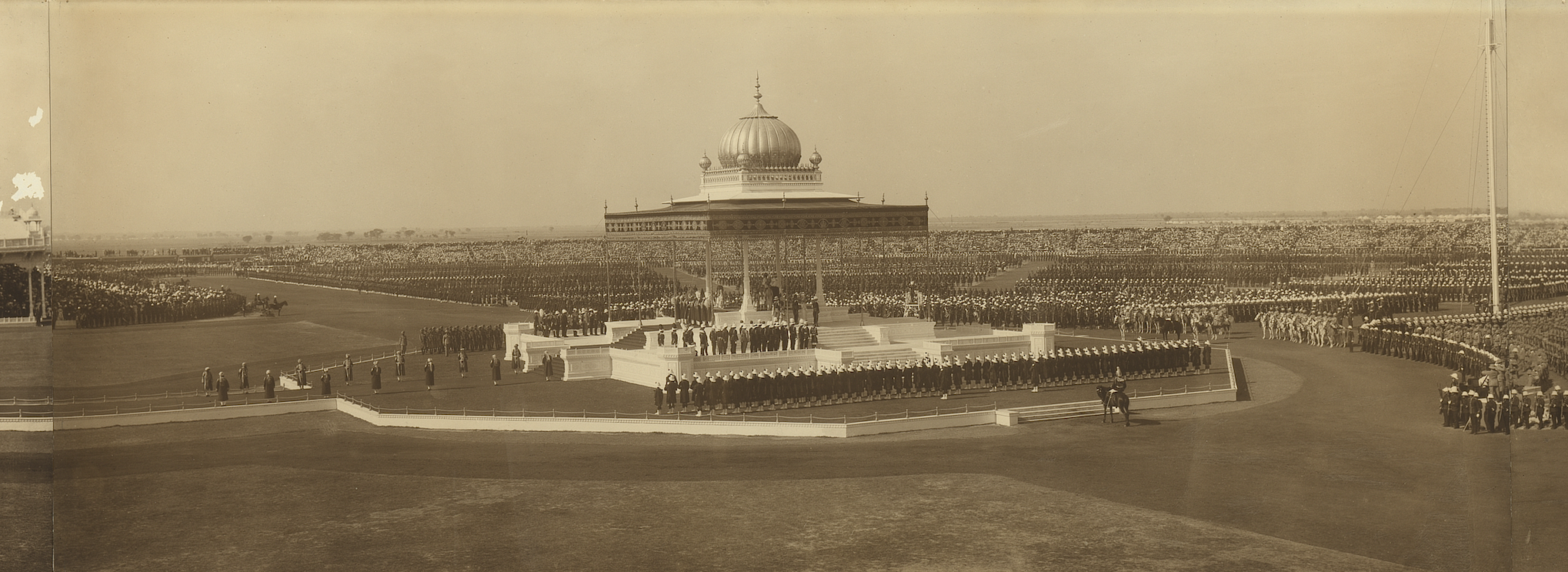
A closer look at a panoramic photograph
The Royal Collection includes many items of memorabilia from the 1911 Delhi Durbar, the grand ceremony which marked the coronation of King George V and Queen Mary as King-Emperor and Queen-Empress of India. This impressive panorama of the event was taken by the young English photographer James Aubrey Kellaway (1879–1965). It had never been previously displayed in an exhibition.
Kellaway worked for Bourne and Shepherd, a well-established Indian photographic studio, and had access to a high viewpoint with prime view over the events. His panorama appears to record one moment in time but at a closer look you can see that it comprises three separate prints, each featuring King George V and Queen Mary at a different stage of the ceremony.
Capturing this image must have involved a high level of thought and planning. Kellaway would have prepared in advance how and when to move his large format camera as events unfolded, and practiced how to quickly replace the used dry gelatin glass plates with unexposed ones. To create the final panorama, the glass negatives were developed in the studio, then projected onto a silver-gelatin coated paper. After processing, the three enlarged positive images were cropped and joined together to form this impressive and complex montage.
In 1914, at the start of the First World War, James Kellaway travelled back to England carrying the panorama negatives with him. He later established his own photographic studio in Sidcup, Kent, where he proudly hung the 1911 Delhi Durbar photograph in the reception room. In 1996, Kellaway’s family donated both the negatives and the framed panorama to the Royal Collection.
In preparation for Eastern Encounters, paper conservators at Windsor Castle unframed the work in order to take a closer look. To their surprise, they discovered block-printed floral wallpaper on the inside of the frame’s backboard. They also noticed evidence of hinges on the board’s lower edge and realised that this long piece of wood was probably once part of a wardrobe door, cleverly repurposed by Kellaway as a backing for the large image.
The photograph prints themselves were in good condition and needed only minimal structural repairs at the edges, where they had been in direct contact with the frame rebate. It seems that the pasted wallpaper might have inadvertently acted as a barrier between the photographs and the wooden backing, preventing any acidic components in the wood from damaging the paper support and the emulsion.










